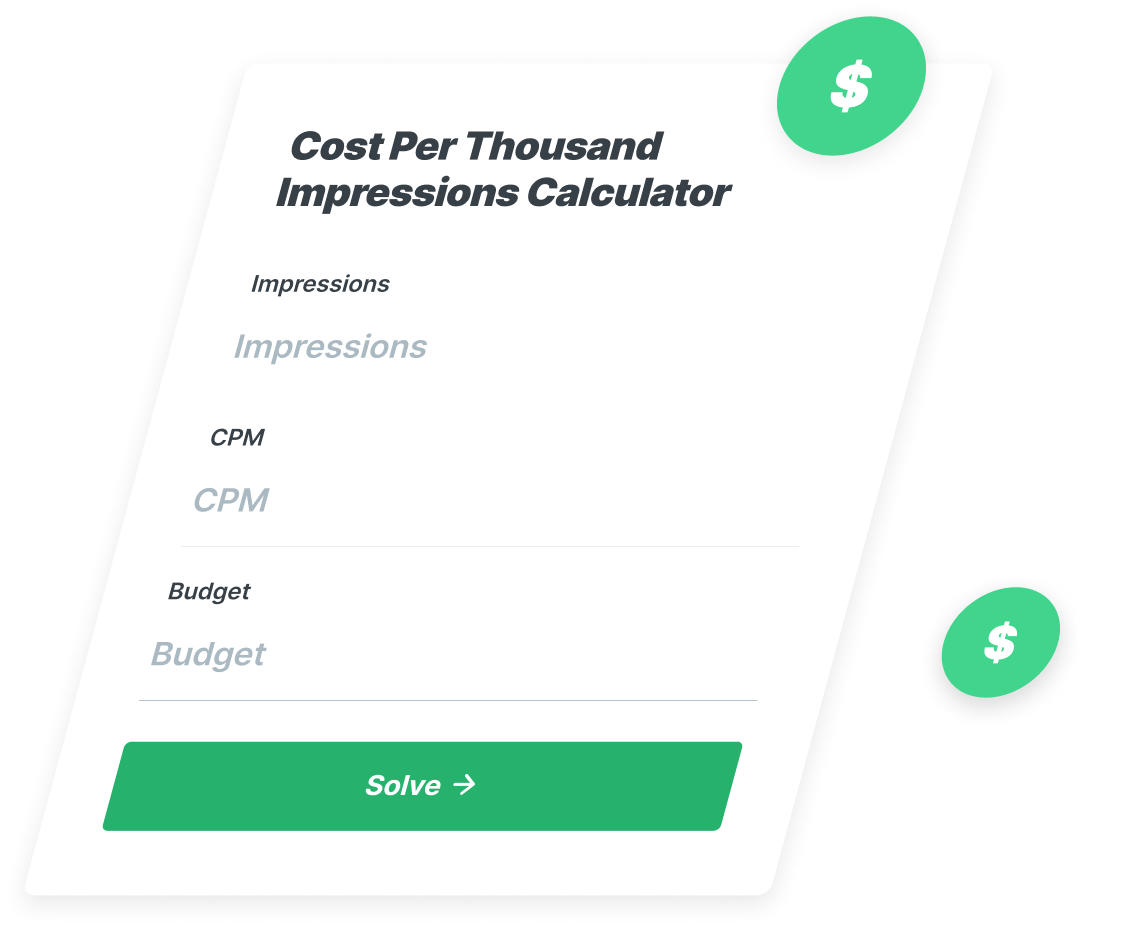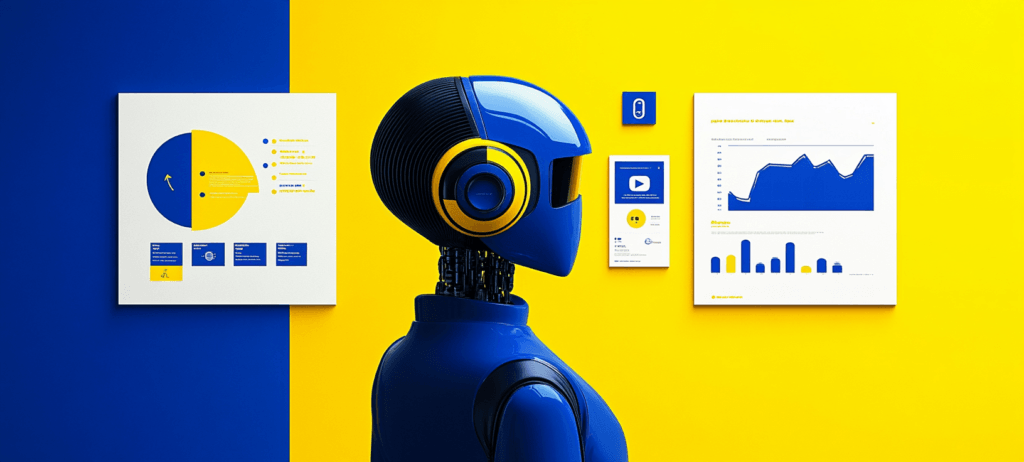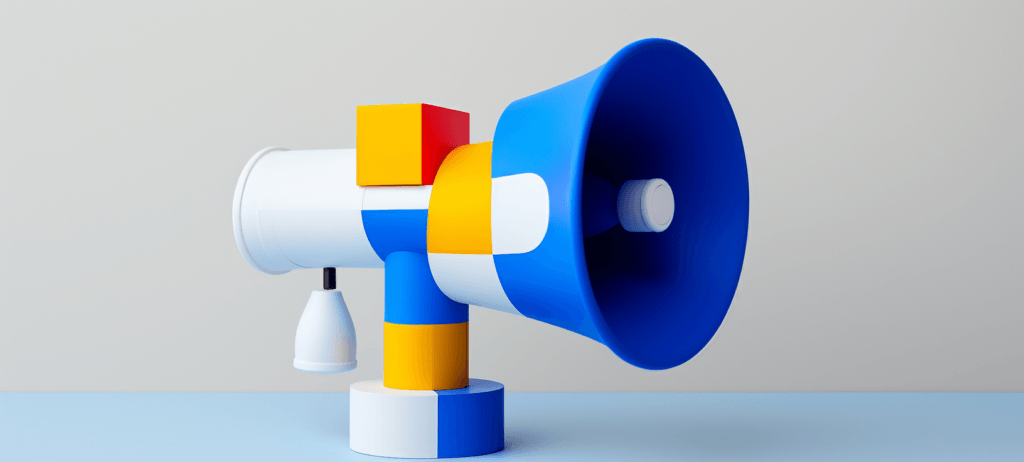-
 Published: Mar 19, 2025
Published: Mar 19, 2025
-
 10 min. read
10 min. read
-
 Kayla Johansen
Kayla Johansen PPC Analyst
PPC Analyst
- Kayla is a Google Ads-certified PPC specialist who manages the FX ads accounts. When she’s not immersed in the world of advertising, she can usually be found reading, playing with her dogs, or playing a cozy video game.
AI-powered audience targeting, bid strategies, campaign types, and more—it’s safe to say AI is rapidly changing the advertising landscape.
Thanks to machine learning, it’s now easier than ever to maximize your advertising ROI at scale. For example, you might use AI to:
- Automatically optimize bids, ad serving, and audience targeting in real time
- Deepen your understanding of your core audience segments to create more resonate ad messaging
- Test more ad variations at scale to personalize the ad experience in real time and automatically serve the best performing variants more frequently
- Scale your campaigns across more channels and reach more high-value audience segments
- Reduce wasted ad spend with AI-powered forecasting and campaign planning
- Free up more of your time for strategic and creative decisions
If you want to stay competitive, you need to keep up with these fast-evolving shifts. Luckily, we’re here to help.
Read on to learn everything you need to know about maximizing ROI with AI-driven paid advertising. We’ll cover strategies to implement, tools you can use, and tips and warnings to keep in mind when maximizing ad ROI with AI.
See Related: How to Use AI for PPC
Top 6 ways AI can maximize advertising ROI
If you’re using Google Ads, Microsoft Ads, Meta Ads, or just about any other popular advertising platform, chances are you’re already leveraging many AI features. These platforms build AI tools right into their interface to improve your campaign performance and save you time.
Plus, more and more pay-per-click (PPC) specialists are using AI chatbots to bolster campaigns and boost efficiency.
A few of the most common ways advertising specialists are maximizing ROI with AI-driven paid advertising include:
- Implementing smart bidding strategies
- Testing out AI-powered campaign types
- Using AI-powered chatbots and dynamic ad types to improve ad personalization
- Automatically optimizing ad copy in real time
- Scaling their audience targeting
- Streamlining common PPC management tasks
Learn about each strategy and how it can improve your advertising ROI below!
1. Smart bidding
Smart bidding strategies are quickly becoming the name-of-the-game in Google Ads and Microsoft Ads. These strategies use machine learning to automatically adjust your bids in real time according to your campaign goal.
Smart bidding strategies include:
- Maximize conversions, which aims to get the most conversions possible within your budget
- Target CPA, which aims to get the most conversions possible at the target CPA you set
- Maximize conversion value, which aims to get the most valuable conversions possible within your budget
- Target ROAS, which aims to meet a target return on ad spend (ROAS) you set
These bidding strategies use the data in your account, including conversions and audience signals, like location, device, and time of day, to automate your bids and achieve stronger performance, with less time investment on your part.
2. AI-powered campaign types
Alongside smart bidding, you’ve also likely seen AI-powered campaign types popping up in Google Ads and Microsoft Ads over the last few years.
These campaign types include options like Performance Max and Demand-Gen, which leverage machine learning to scale your ads beyond traditional search channels in a cost-effective way.

In competitive industries, where bottom-of-funnel searches can carry high costs-per-click (CPCs), these AI-driven campaigns help you maximize your advertising budget and efficiently reach more users by expanding your paid advertising across more of the funnel.
Plus, according to Google, Performance Max campaigns can “supercharge” your standard search campaigns using their AI-driven learnings.
Pro tip: For lead-generation accounts, try to use a conversion action that’s as far down the funnel as possible while still accumulating sufficient data for the system to learn from. For example, I’ve experimented with using a qualified lead import vs. anyone who submits a lead form to cut back on potential spam leads.
3. Increased personalization and audience resonance
One of the best ways to convert more users from your paid advertising campaigns—and as a result maximize your ROI—is to create messaging that resonates with them. AI helps you do this by:
- Helping you serve more personalized ads at scale
- Automatically serving the most relevant ad to each user in real time
- Deepening your understanding of your target audience to improve your messaging
To take advantage of these benefits, make sure you’re using smart bidding, alongside dynamic ad types, such as Responsive Search Ads. These dynamic ads let you include multiple headlines, descriptions, and/or images that the machine can use for real-time optimization.
Additionally, use AI chatbots to conduct research into your various audience segments and better understand their pain points. Business-to-business (B2B) businesses, for example, can quickly brush up on industry jargon to ensure they’re using language that resonates with their target users in their ads.

4. Automated ad optimization
Dynamic ads also streamline ad optimization. When you include several options for ad headlines, descriptions, images, and more, the AI can learn which ones perform best and serve them more frequently.
With this real-time optimization, you no longer have to spend as much time manually testing every possible ad copy combination—the ad platforms can do it for you!
5. Scalable audience targeting
All the major advertising platforms also include lookalike and predictive audience capabilities, powered by AI. With these AI-enhanced targeting tools, you can reach more users similar to your current and most valuable customers at scale.
To make the most of these targeting capabilities, ensure you’re syncing first-party data into the ad platforms (in a privacy-first manner!) and tracking conversions as robustly as possible.
Ad platforms will use your first-party data and conversion information to build and optimize these audiences.
6. Streamlining common ads management tasks
When it comes to maximizing ad ROI with AI, don’t overlook the value of time-savings. AI can help you streamline and automate many of your recurring tasks so you can spend more time making strategic decisions and optimizing your creative inputs.
Some possible ways to use AI for common PPC management tasks include:
- Summarizing customer reviews: AI can help you summarize yours and your competitors’ reviews to quickly see what customers like and dislike about each brand. Use your findings to improve your ad copy and landing pages.
- Optimizing landing pages: Plug your top competitors’ landing pages into your AI tool of choice and ask it to summarize the key points of the pages, plus what they’re missing. Use your findings to improve your own landing pages.
- Writing new ad scripts: Did you know Google Ads lets you implement ad scripts to automate various tasks? Scripts are an incredibly powerful tool, but they require JavaScript knowledge. If you don’t know JavaScript, use an AI model like Claude to create a script for you.
- Generating negative keywords: Use AI to create a list of negative keywords for new campaigns to start them off on the right foot and reduce wasted ad spend.
However, don’t limit yourself to this list. Get creative with your prompts and see where it takes you!
AI-driven tools for paid advertising
So, now you know how AI is transforming paid advertising and creating more opportunities to maximize your ROI. But what tools can you use to put it into action? Check out these AI-driven advertising tools to get you started!
- Chatbots like ChatGPT, Gemini, Claude, etc.
- TeamAI, which combines several chatbots in one platform and lets you share prompts across your team
- Built-in platform features in Google Ads, Microsoft Ads, Meta Ads, etc.
Tips for maximizing ROI with AI-driven paid advertising
Thanks to AI, the possibilities for maximizing your advertising ROI are seemingly endless. However, to set yourself up for success from the start, follow these best practices when it comes to using AI for paid advertising:
Use first-party data
AI is only as good as the data it has to learn from. To optimize your ad campaigns for the largest possible ROI, sync your first-party data, including customer and lead lists, into each ad platform.
Prioritize your conversion tracking
Another key data element AI-driven advertising platforms require is conversion info. Ensure your conversion tracking is set up on each platform, sync offline conversions whenever possible, and add conversion values where relevant.
Implement guardrails
AI-driven campaigns like Performance Max can run wild if you don’t put the right guardrails in place. Add as many signals as possible to these campaigns to help guide them in the right direction. Possible signals you might include are:
- Audience data
- Negative keywords
- Content suitability settings
- Brand inclusion and exclusion lists
Test and measure
Anytime you’re implementing a new AI-driven tactic, measure it against your key performance indicators (KPIs) to ensure it’s driving the results you want. While you’ll want to give the AI enough time to learn from the data and optimize accordingly before pulling the plug, don’t let the AI run free without a human guiding its path.
For example, when I tested out broad match keywords alongside a smart bidding strategy (a common AI-powered Google Ads strategy), I found the keywords would match many irrelevant search terms. As a result, I had to be aggressive with auditing and adding negative keywords.
I also found overall that my broad match keywords generated mixed results: Some keywords performed above average, while others performed below average.
Moral of the story: Always keep a close eye on any AI-driven tactics you implement.
Unify your data
While AI can help you make sense of your data, it’ll be most effective if you have all your data in one place. Try to implement a “single source of truth” for your paid advertising channels—and, if possible, all your marketing channels outside of paid advertising, too.
Experiment with additional channels
One of the biggest benefits of AI-driven paid advertising is the time-savings it brings you. Use this newly freed-up time to test out new ad channels and continue scaling.
What to look out for when using AI to maximize PPC ROI
Lastly, I’d be remiss to talk about the benefits of AI-driven advertising without also mentioning a few notes of caution to keep in mind when implementing it. To ensure AI is helping your campaigns, rather than hurting them, keep an eye on these areas of interest:
- Ethical data use: Ensure you’re always using the appropriate privacy-first methods when using and uploading first-party data.
- Content quality: Always double-check anything produced by AI for accuracy, brand suitability, and relevancy.
- Copyright infringement: Be careful not to infringe on artists’ or other creatives’ copyright when using AI tools.
- Creativity: Don’t overlook the need for human-powered creativity. You and your team have ideas and artistry that AI can’t replicate. Use this creativity to your advantage and stand out in a marketplace that’s growing increasingly saturated with AI-created content.
- Human-powered strategy: AI can help you scale and optimize campaigns, but ultimately, it can’t run them for you. AI is here to assist you. With the right approach, AI-driven paid advertising will free up more of your time to make more strategic decisions and 10x your creatives.
Need an extra hand maximizing your advertising ROI?
We get it—the PPC world is constantly changing, and AI has only sped up those changes. If you’re struggling to figure out how to use these AI-driven strategies to maximize your PPC ROI, our team at WebFX can help.
Get in touch with us to learn more about our advertising management services today!
-
 Kayla is a Google Ads-certified PPC specialist who manages the FX ads accounts. When she’s not immersed in the world of advertising, she can usually be found reading, playing with her dogs, or playing a cozy video game.
Kayla is a Google Ads-certified PPC specialist who manages the FX ads accounts. When she’s not immersed in the world of advertising, she can usually be found reading, playing with her dogs, or playing a cozy video game. -

WebFX is a full-service marketing agency with 1,100+ client reviews and a 4.9-star rating on Clutch! Find out how our expert team and revenue-accelerating tech can drive results for you! Learn more
Cost Per Click (CPC) Calculator
Do you advertise on platforms that charge per click? Use our calculator and figure out exactly how many clicks will fit within your budget.
Calculate Your CPC
Unlock the Potential of PPC for Your Business
See how WebFX helped another company increase quote requests from paid search.
See How We Did It
Proven Marketing Strategies
Cost Per Click (CPC) Calculator
Do you advertise on platforms that charge per click? Use our calculator and figure out exactly how many clicks will fit within your budget.
Calculate Your CPC





